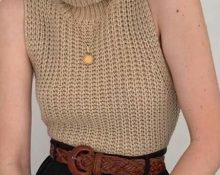
creativecommons.org
Kashibo fabric first appeared in the sixties of the twentieth century. The production of unique synthetic material began in European countries. The task of researchers and scientists of that time was to create an innovative, inorganic material with the properties of natural fabrics.
When the industrial sector began to produce the fabric, it created a real sensation. Now the material is actively produced in Korea and China. Countries produce kashibo, process it, paint it, and then the material is sent for import. The huge range of colors in which these materials are presented and the excellent properties make kashibo popular throughout the world. At the same time, almost any sewing shop can afford the fabric - its cost is quite affordable.
Kashibo fabric - what is it, detailed description
Kashibo fabric, the description of which is replete with advantages and benefits, is rather a summer material.It is recognized as the most popular and comfortable for sewing clothes during the hot season of the year. Natural silk, cotton and linen can be compared with it. The airy, light structure allows the body to breathe in the heat and enjoy the breeze. There are two types of fabric:
- Chiffon. It has a smooth surface and a material that is pleasant to the body.
- Crapy. The surface seems slightly rough, but it is soft and light.
In general, the difference lies only in the surface. Both types of fabric are used in sewing summer clothes; they are perfectly ventilated and prevent the body from sweating and feeling the heat. The material is quite soft and delicate to the touch. Outfits made from it seem airy and flying. It is important to know:
- Kashibo does not have elasticity;
- the fabric does not stretch, which should be taken into account when choosing footage for sewing products;
- The colors of the canvas can be different - in one tone, multi-colored or decorated with printed prints.
To create the material, long fibers consisting of polyester are used. A loom and satin technique are used to weave these fibers. During weaving, the equipment slightly separates the fibers from each other. This is done specifically so that the canvas is blown, airy and practically weightless.
Kashibo - what kind of fabric and where is it used?

creativecommons.org
The texture of kashibo resembles thin cotton or crepe fabric. It looks like silk and chiffon. Products are sewn using specialized machines. Among the most popular items made from this fabric are:
- Luxurious summer dresses with flounces. Use a cord, braid or regular ribbon as a belt.
- Sundresses for summer walks. Fashionable fittings will highlight all the advantages of the products.
- Business and romantic blouses, beach tunics and fashionable shirts.
- Comfortable, weightless wide-cut trousers.
- Various skirts.
- Fashionable light scarves, stoles, shawls.
Products made from kashibo are ideal for relaxing on a hot beach. Moreover, you can sew a pareo or tunic yourself. To do this you will need a needle, thread, scissors and the material itself. The fabric has another significant advantage. It protects the skin from direct exposure to the sun. Thanks to the synthetic material, the tan does not take place so harshly, so your shoulders do not burn and your skin does not suffer.
Kashibo fabric - what is it and how to care for it
Caring for the material is not difficult. It is very easy to clean and the material is not damaged by insects. There are several rules for maintaining kashibo products. If you follow them, your clothes will delight you for many years. In addition, the fabric does not lose color at all even under the scorching rays of the sun. Beach cover-ups last at least seven years with regular wear. The advantage is that the products do not need to be ironed, they practically do not wrinkle. If a couple of dents appear, just hang the item on hangers for a couple of hours and it will completely straighten out. How to care:
- The products can be washed by hand or in an automatic machine. The main thing is not to combine washing kashibo with items made from other materials.
- It is not advisable to use bleaches that contain chlorine. Powders containing this substance should also be replaced.
- Liquid products such as capsules or gels are best suited for washing.
- Do not wring out items after finishing washing. First, the water should drain on its own. Afterwards the product is hung to dry.
- If the fabric is badly damaged, you can take it to the dry cleaner.
- It is advisable to avoid ironing and steaming.


 0
0





